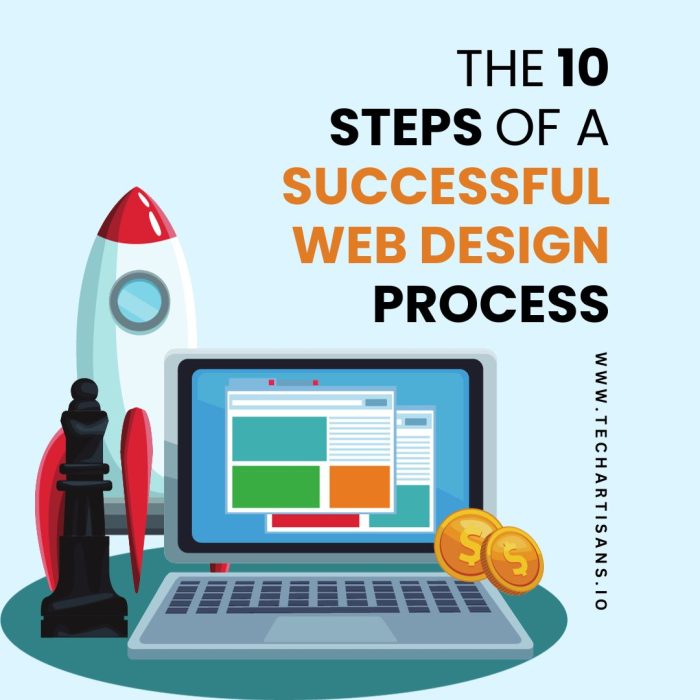As professionals in the web design process, our perspective often centers on orchestrating a harmonious interplay of visual elements, backend coding, and wireframes. It’s important to emphasize that these facets indeed constitute the fundamental pillars of web design.
However, the website development process encompasses a depth beyond these elements. The distinction between an exceptional website and a satisfactory one lies in the adept execution and synchronization of the successful site design process and strategic approach, seamlessly attuned to the objectives of the clientele. In this article, I have included a pre launch checklist that you can follow to launch a brand new website.
What is a Web Design Process?
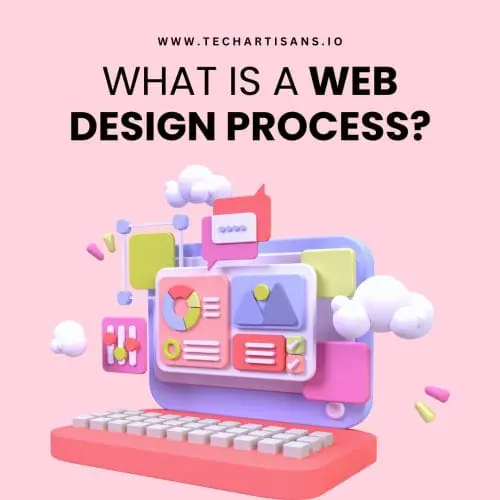
The web design process determines a roadmap or a short plan that a group or team follows to create a website. Knowing the whole process well helps you save time, money, and effort that might otherwise go to waste.
Why is the Web Design Process Important?

Here are some reasons why web design processes are important:
- They make web design and development faster and better.
- Everyone involved knows what to do and stays organized.
- They help manage all the different things needed for web design and development.
- They create a good impression on potential customers.
- It improves web users’ experience, and guides user journey on the website.
So, in short, the team or person working on the website should know all the ten steps of the process that web design agencies follow.
Remember what Milton Glaser said: “There are three responses to a piece of design – yes, no, and WOW! Wow is the one to aim for.” To get that “wow” effect, you need to understand the process and everything related to it!
10 Step Website Launch Checklist For a Web Designing Agency to Make an Appealing Website
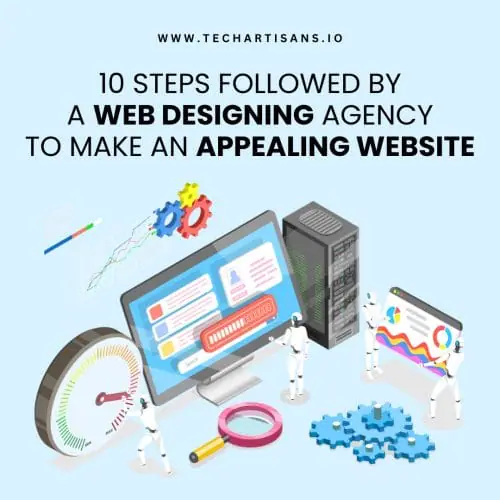
Here’s a website design checklist; how to launch a high-performance site through an organized design process.
1. Discussing Project Goals and Requirements
Having a goal without a plan is like just making a wish. That’s exactly how it works when designing websites.
Every company wants its products and services to be well-known to the site visitors. Website Designers have an important job: they need to talk to the stakeholders to understand their goals and details to figure out the best way to show off a client’s brand and website design to the world.
Spending a bit of time talking to the important people involved and understanding the needs of the target audience will save a lot of time in making the website design.
All this information will be super useful throughout the entire web design process.
2. Web Design Project Scope and Timeline
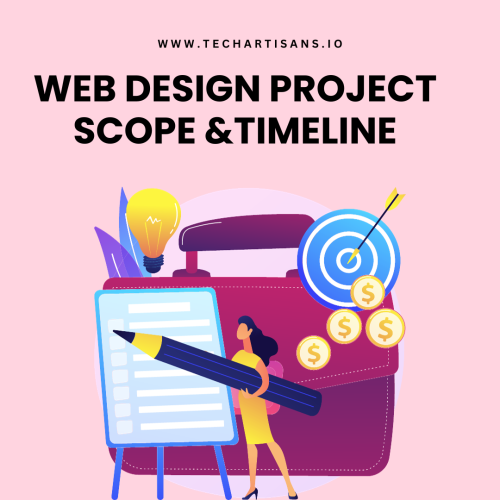
Knowing what a project includes and setting realistic deadlines for finishing it is important when designing websites. This step is like the foundation of the whole process because it helps everyone know what and when to expect.
A good way to determine project scope and timeline is by using something called a Gantt chart. This chart shows all the things that need to happen in the project and when they should start and finish.
It helps the website builders understand what they need to do, what should be the web page design and when they need to do it.
Also, this chart helps to avoid something called “scope creep.” That’s when the client’s ideas for the project change or grow over time. If this happens, you can look at the chart and see what was originally planned. It helps you notice if things are getting bigger than they should in terms of work, time, and money.
3. Web Design Proposal
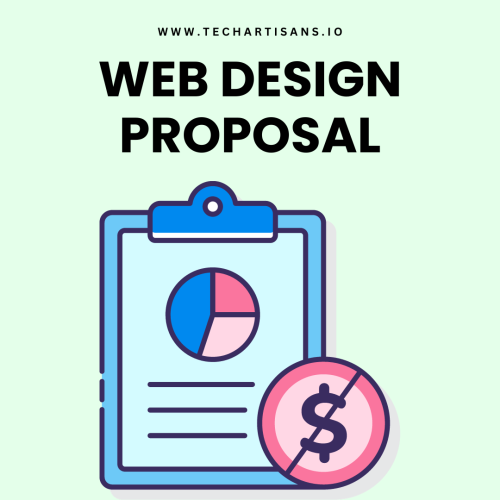
A web design proposal is a special agreement between two groups.
When we reached this step, both sides agreed to what was talked about for the new website launch.
This paper answers the following questions:
- What will the project do?
- When should it be done?
- How much money will it cost and how will you pay?
- Who is the hosting provider for your website?
- Are there any extra things that might happen?
- How many times can we make changes?
- Do you already have a business website? If so, what do you want different in the existing site than the previous website?
- What are the things that the website must have?
- How will you take care of the website after it’s done? Who will do the Search Engine Optimization of the new site?
Having this written plan helps stop misunderstandings and makes sure everyone knows what’s expected and what will be done.
4. Outlining Navigation and Site Information Architecture
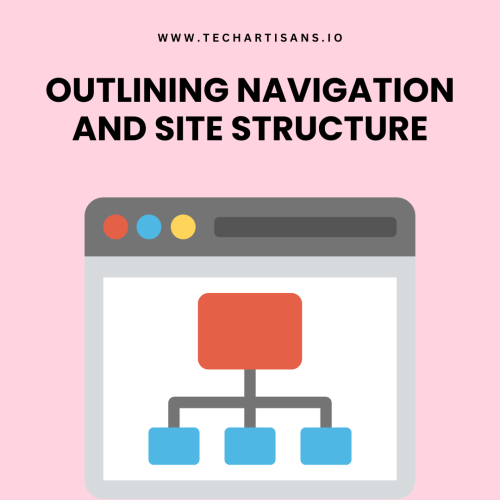
Just like a map helps you find places, the site structure or site architecture helps people find things on it. This is a big deal in making websites.
We put all the main pages and smaller pages in the right order in the site structure.
Once we have this order, we can decide how to show visual content to people. There are lots of ways to design a web website, and how people move around the website, like clicking on menus or moving the mouse.
But what’s super important is thinking about what makes sense for the people who will use the website. We want to make it user-friendly to help them find what they want, like arranging things in a way that makes sense to them.
5. Visual Design Elements and Website Content Creation
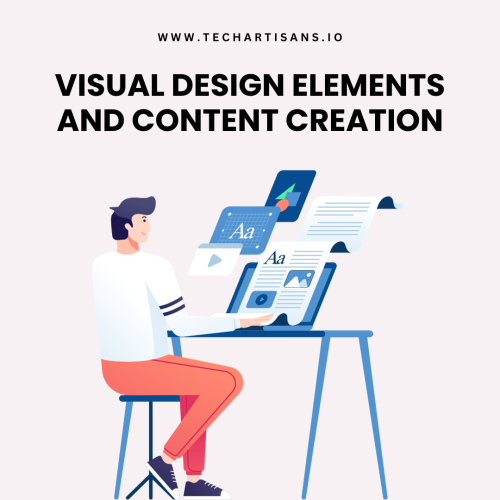
A website without pictures and words would be pretty dull.
Usually, the client gives the words and pictures they want on the website. But we can be helpful by suggesting what kind of stuff to put on the website and how to organize it so people will like it. We conduct keyword research using a few tools like Google search console to make sure your web pages rank higher on search engines.
Tech Artisans take what the client wants and turn it into pleasant visual impression that grab attention and even make people buy stuff or sign up.
When making the written content, we think about these things:
- Will people find the site content interesting?
- Will the content make people want to do what we want them to do?
- Does the content fit with how the website looks?
- Does the content guide people on a journey through the website?
- Is it good for major search engines results pages?
When creating the visual content, we think about these things:
- Does the logo match the company’s image?
- Do the colors match what the company likes?
- Should we use any specific images of the company?
- Will there be videos on the website?
- Can people click on the pictures?
- Are the fonts right for the company’s style and brand identity?
How the website looks and what’s on it are important for digital marketing to give results. They’re what keep people interested and make them want to come back. Good pictures and videos that don’t slow down the website can make it more exciting and show the company as cool and trustworthy.
6. Wireframing and Mapping Out

At this point of the overall web design process, things are starting to come together. You’ve got all the ingredients ready and now it’s time to mix them up.
A wireframe is like that helpful guide that takes your website from one point to another in terms of how it will look.
The wireframe decides where everything will go on the website and how it will be set up. It’s like making sure all the pieces fit in the right places. You can create wireframes right into your content management system.
Wireframes are handy because they help us catch any missing parts of existing website, like pages that should be on the website but were forgotten about, such as the Privacy Policy and Terms of Use pages.
7. Prototyping
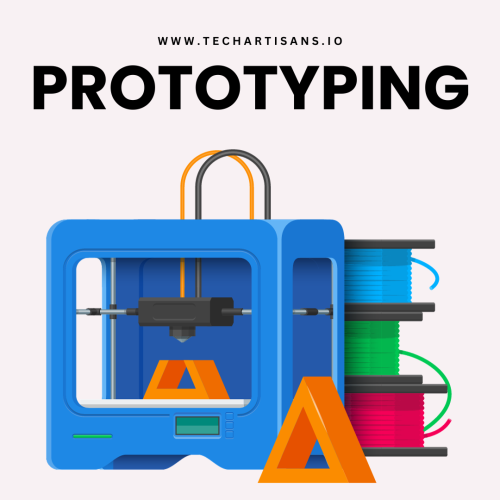
When the designing part of the whole website design process is done, it’s time to show the stakeholders a model of what the website will look like.
Now, the stakeholders will check all the internal links, external links, meta descriptions and pictures, and make sure the content is right. Often, this model is like the last look before the website goes live.
If there are any problems, mistakes, things that need to be changed, or things that need to look different, a team of experts will fix them to make the website better.
8. Advanced Web Development

If there are any fancy things (like special tools or connections) that weren’t finished before, they need to be created now. The web developer (who might not be the same person who made it look good) should spend time testing and making sure everything is running smoothly. They should also make sure the website loads quickly while they’re building it.
9. Website Testing and QA
Testing and quality assurance is an important step of the web design process. Having a website that’s live but has broken links, spelling mistakes, messy text, unclear pictures, or web pages that don’t work well is not good.
At this point, the website gets checked again for elements like page titles, social media share icons, website security, etc. First, the team who made and put the website together checks it. Then, the stakeholders, both from inside the agency and outside, take a look at the new site pages.
This is when we test the website in different ways, like using various internet browsers and different types of phones or tablets. We might even look at it from different places on the internet. It’s also important to make sure the website looks and works well on multiple mobile devices.
This step is about making sure the website is in great shape before showing it to everyone.
10. Website Launch
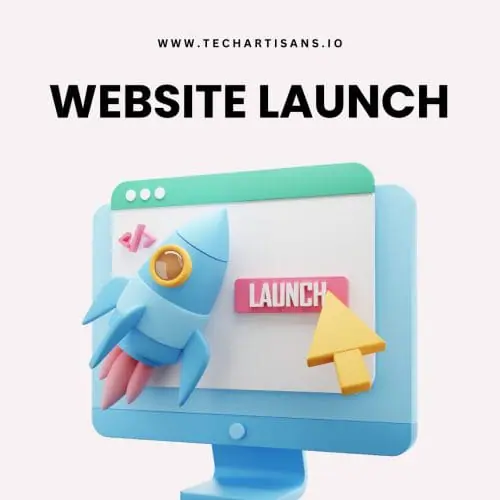
Now comes the really fun part of the web design process. All the effort we put in has led to this moment – we are about to make the website live!
Everything that was needed was done. The content on the final website pages is interesting and eye-catching. Each button does what it’s supposed to, and all the existing pages are connected the right way.
But hold on, the job’s not finished. Even though the website is out there for everyone to see, you’ll still need to look after it and perform regular web design maintenance. This means doing regular check-ups and making updates to keep the website running well and helping your client get good results with site speed and site’s ranking.
Conclusion
Always making things better means putting in new stuff which is paramount for a successful web design process, trying things out with people who use the website, watching the numbers that show how it’s doing, and fixing any problems as they come up.
Remember, a great website is never finished. Constant improvement and changes is a part of any website launch list. When what you want to achieve and your goals change, you’ll make small changes to guide the website users and the company where you want them to go and encourage users to take certain actions.
The secret to amazing web design is having a comprehensive website launch checklist that works every single time. No matter what kind of website you’re making, following a certain process will make each project go well and make clients happy, and ensure better site performance.

